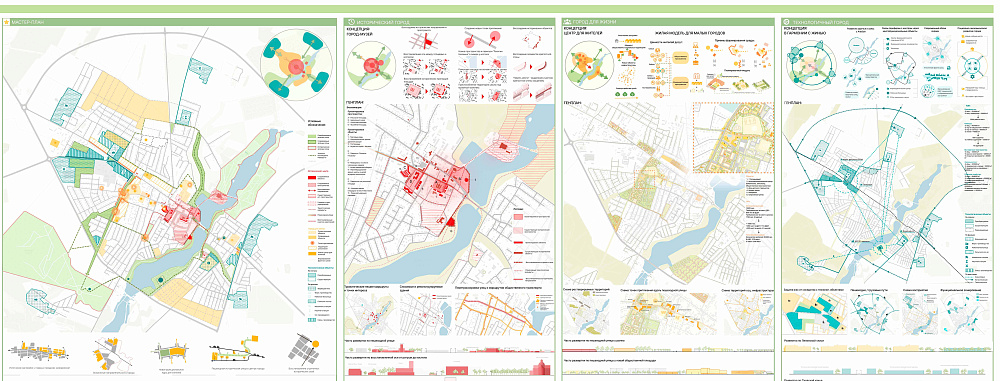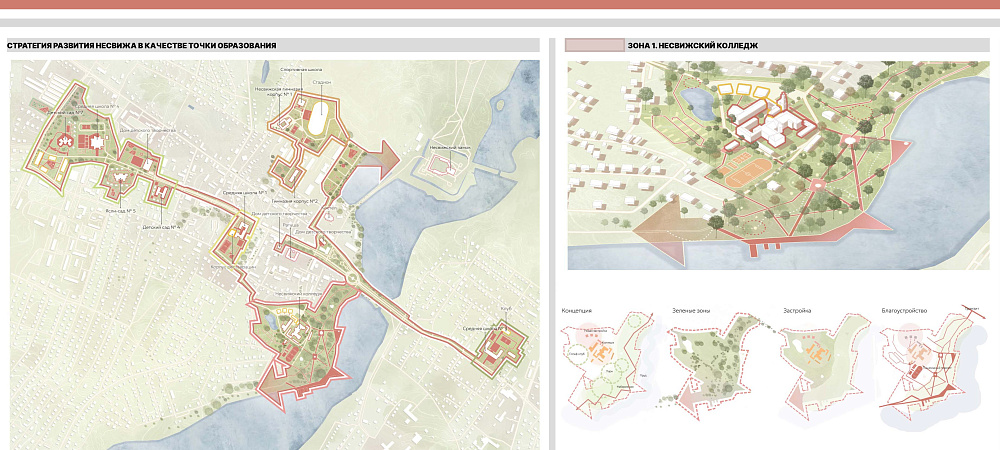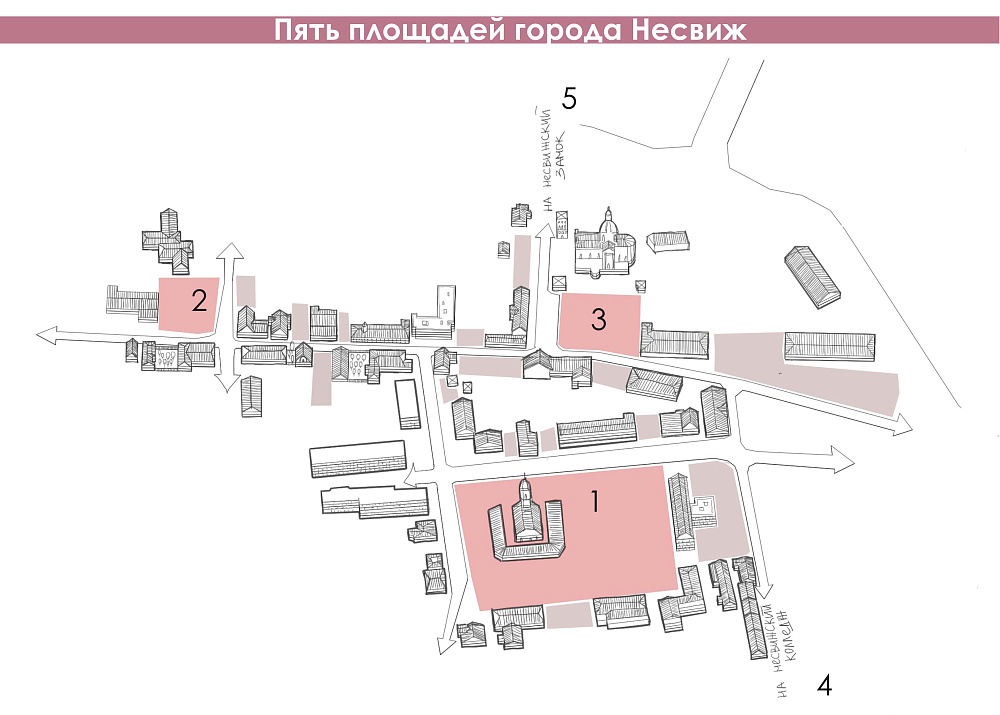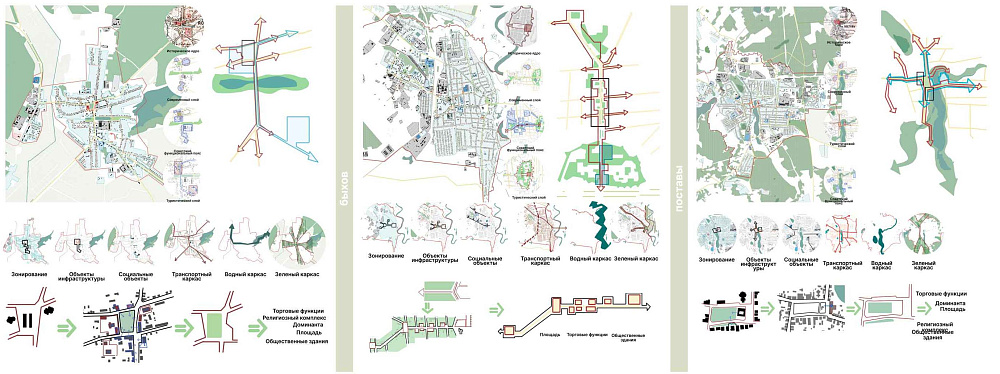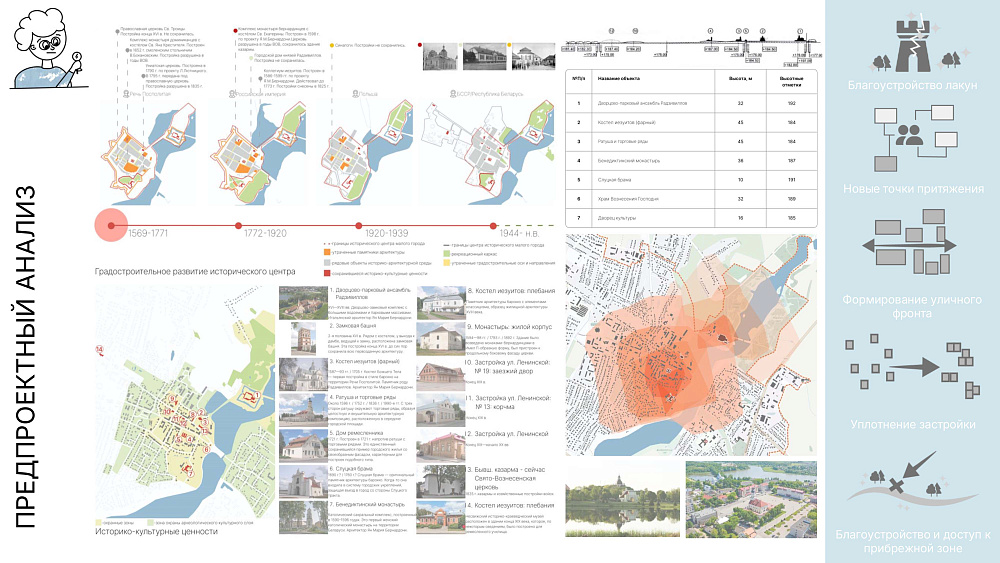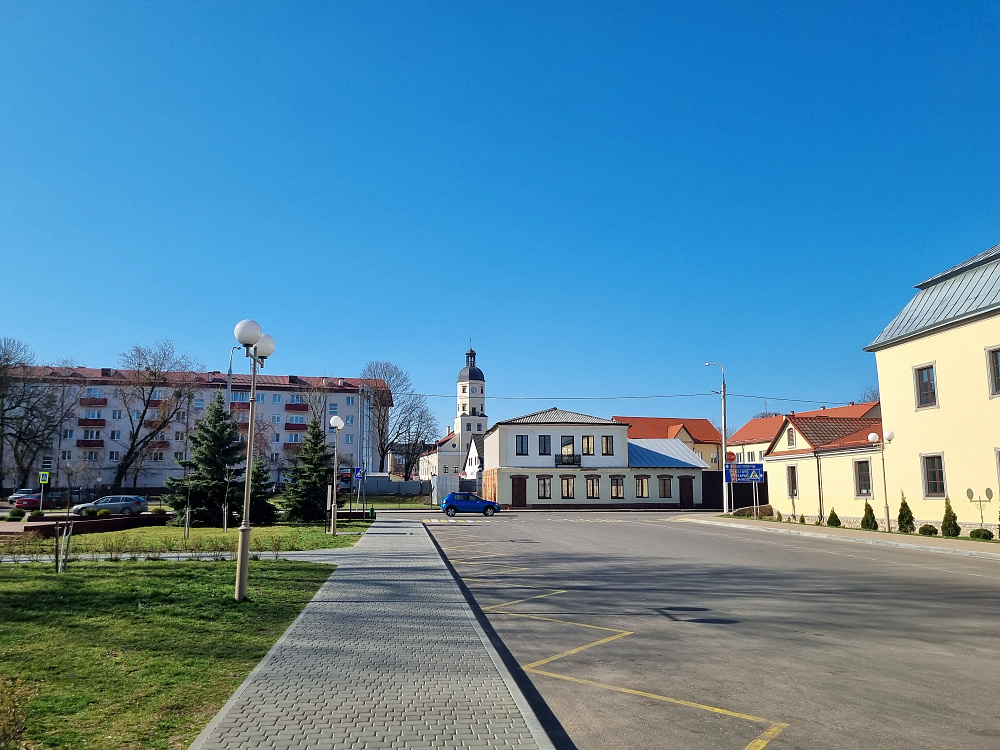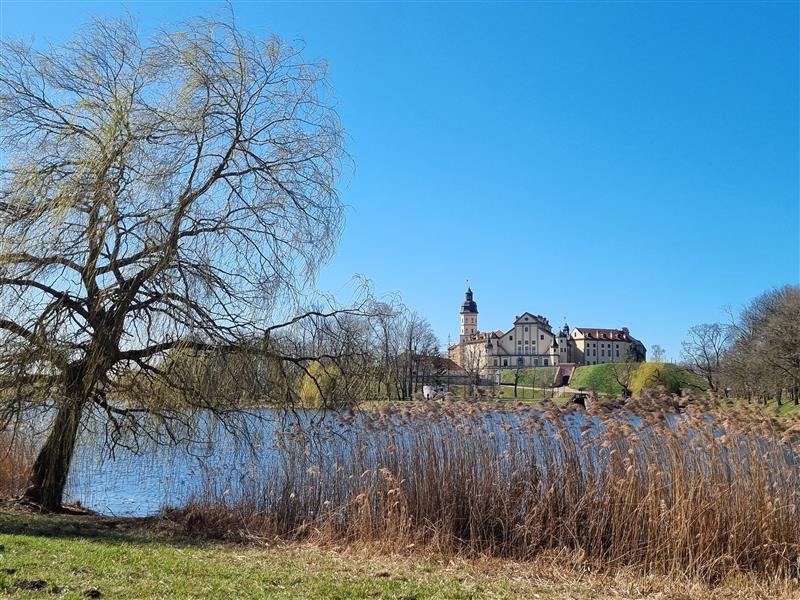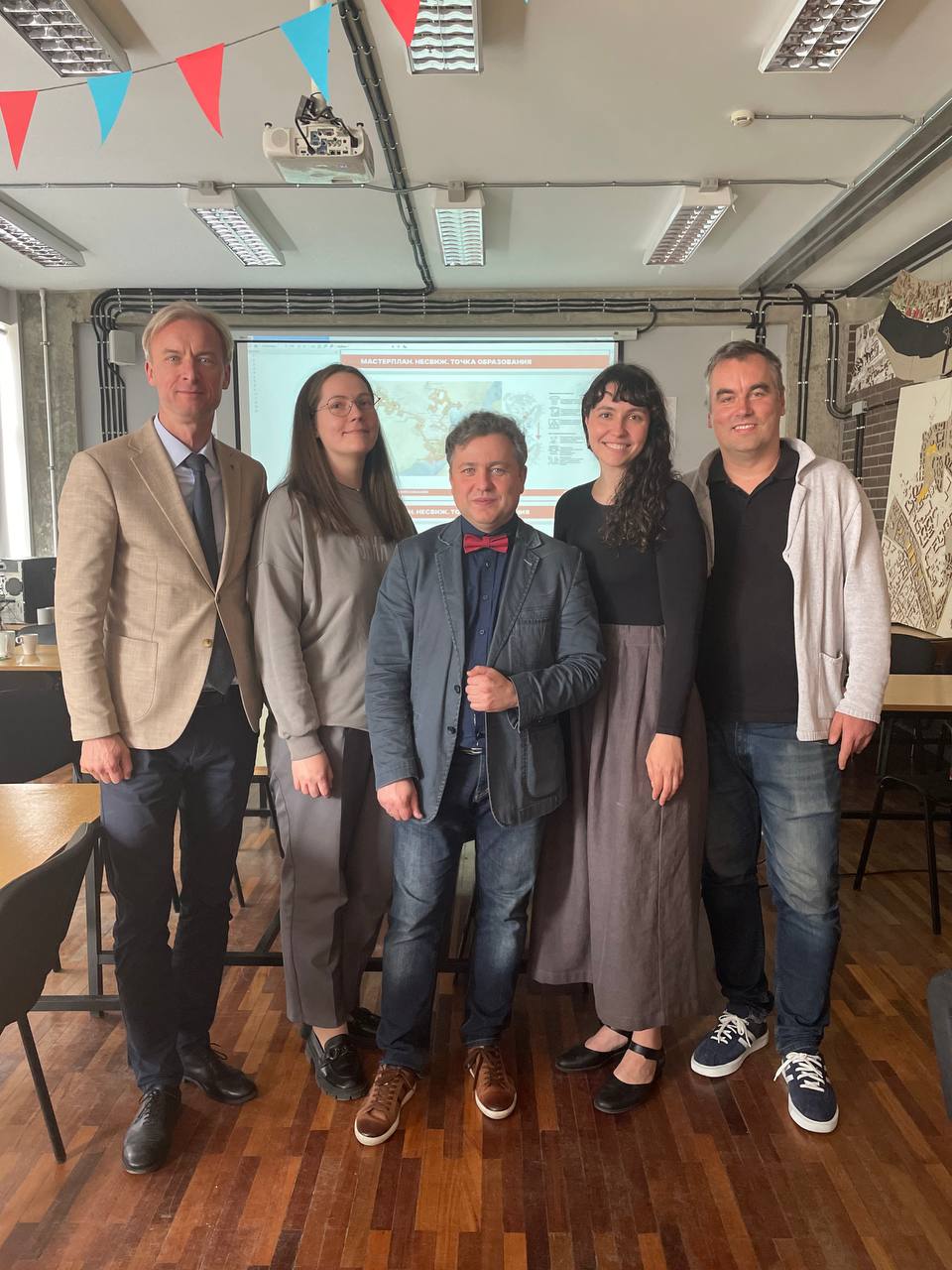Fourth-year students of the Department of Urban Planning of Mikhail Vilensky's workshop, as part of interaction with the architectural community of the Republic of Belarus and Russian architectural bureaus, completed projects for the comprehensive spatial and architectural-compositional development of the city of Nesvizh in the Minsk region.
The architectural community of the Republic of Belarus was represented by the first deputy chairman of the Public Association of the Belarusian Union of Architects, head of the design company VIASET, PhD of Architecture Vadim Drazhin, who took part in the procedure of protection and expert evaluation of the works; and on behalf of the Russian architectural community it was the head of projects of the MLA+ bureau, PhD of Architecture Mikhail Stepura.
Nesvizh is one of the oldest and most beautiful cities in Belarus, with a rich historical and cultural heritage. One of the four sites of the republic included in the UNESCO World Heritage List is located here – the Radziwill Castle and Park Complex. In addition to it, the city has preserved many unique architectural and urban planning monuments, including the city hall, shopping arcades, temples, monasteries, remains of city fortifications and historical stone buildings. Currently, Nesvizh continues to actively develop as an administrative and tourist center.
The work on rethinking and reorganizing the spatial development of Nesvizh was carried out under the supervision of teachers from the SPbGASU Department of Urban Planning: PhD of Architecture Mikhail Vilensky, PhD of Architecture Ksenia Veretennikova and Elena Karpenko.
As part of the team research, students studied the history, culture, evolutionary spatial-territorial development, transport system and functional features of the city and its architectural-stylistic and compositional parameters of development. As a result, five teams of students presented their own views on the development of Nesvizh, focusing on its various aspects in their projects:
- "Reorganization of the center of the small historical town of Nesvizh" (Arina Akatova, Elena Belousova and Diana Nurgalieva);
- "Three centers of the small historical town of Nesvizh" (Elizaveta Murygina and Ekaterina Shishova);
- "Nesvizh. Development Point" (Anastasia Zapolskikh and Anzhelika Ivanikhina);
- "Five squares of Nesvizh: the concept of development of public spaces of the historical center of the city" (Sofia Artyukhova);
- "Research of the centers of small historical towns and three functional-spatial strategies for the development of the city of Nesvizh" (Ivan Bondar, Gleb Grebennikov, Mussa Laipanov, Anastasia Leontyeva and Egor Korenkov).
The invited representatives of the Russian and Belarusian architectural community highly appreciated the students' works. In the future, the projects will be presented for consideration by interested parties in the Republic of Belarus.
As Vadim Drazhin noted, "five teams of student architects proposed strategic development of tourism as a key function of the historical center of the city of Nesvizh. The design solutions, based on the research, are of interest for consideration by the city administration with subsequent application in adjusting the detailed city plan."
The Department of Urban Planning targets on further developing close cooperation with representatives of the architectural community, administration and architectural and urban planning educational institutions of the Republic of Belarus.








